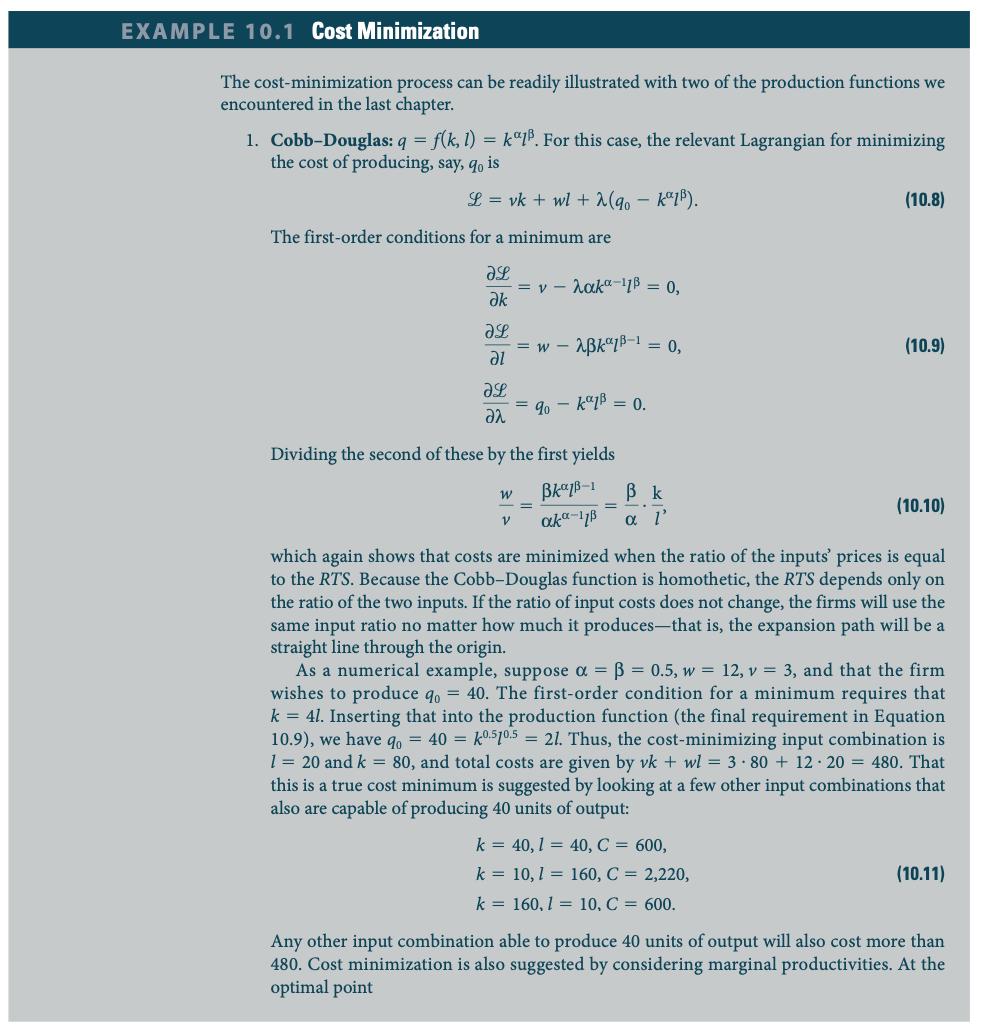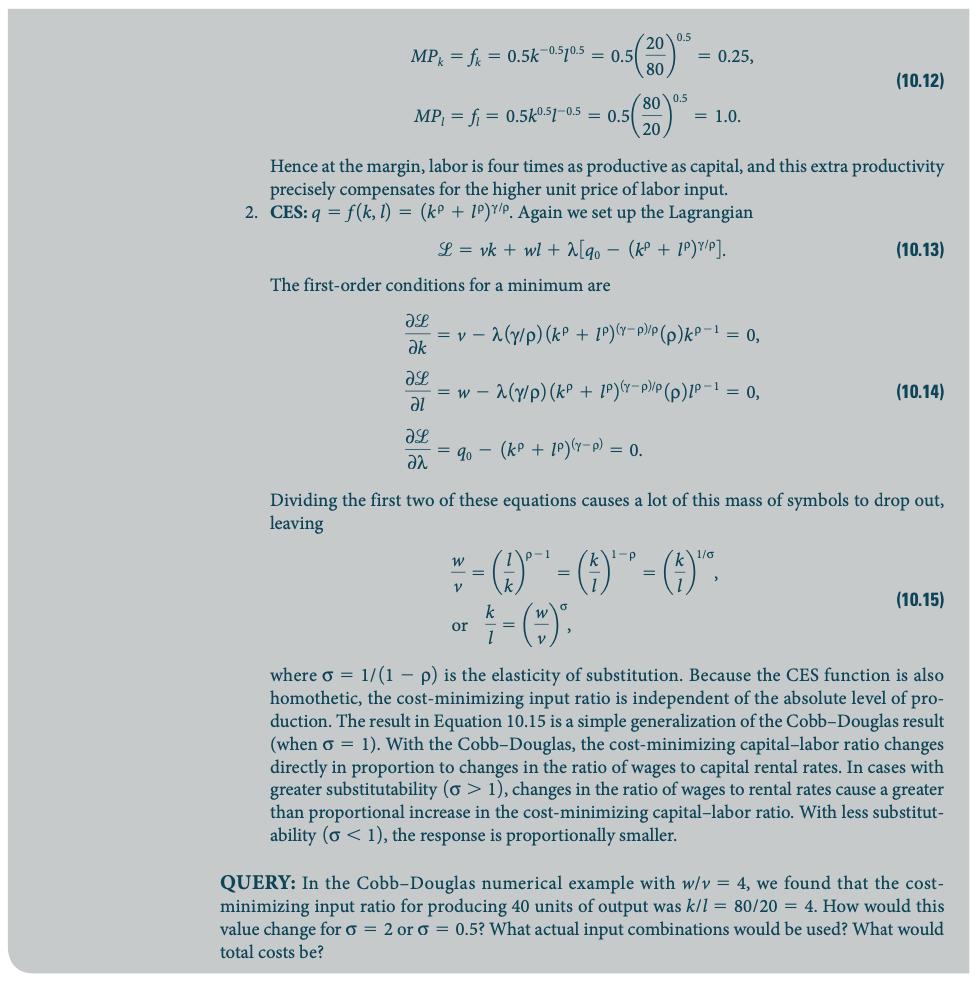Answered step by step
Verified Expert Solution
Question
1 Approved Answer
In the example shown below, what is the ratio of labor productivity to capital productivity at equilibrium in the Cobb-Douglas numerical example? What is the
In the example shown below, what is the ratio of labor productivity to capital productivity at equilibrium in the Cobb-Douglas numerical example?
What is the ratio of the unit price of labor to the unit price of capital?
How does this relate to the last dollar rule?


EXAMPLE 10.1 Cost Minimization The cost-minimization process can be readily illustrated with two of the production functions we encountered in the last chapter. 1. Cobb-Douglas: q = f(k, 1) = k1. For this case, the relevant Lagrangian for minimizing the cost of producing, say, qo is L = vk + wl + (9, - k1). (10.8) The first-order conditions for a minimum are aL = v - raka-11B = 0, ak = w - ABk"1B-1 = 0, al (10.9) = 90 - k"1B = 0. Dividing the second of these by the first yields B k (10.10) !! aka-1B a l' which again shows that costs are minimized when the ratio of the inputs' prices is equal to the RTS. Because the Cobb-Douglas function is homothetic, the RTS depends only on the ratio of the two inputs. If the ratio of input costs does not change, the firms will use the same input ratio no matter how much it produces-that is, the expansion path will be a straight line through the origin. As a numerical example, suppose a = B = 0.5, w = 12, v = 3, and that the firm wishes to produce q, = 40. The first-order condition for a minimum requires that k = 41. Inserting that into the production function (the final requirement in Equation 10.9), we have q0 = 40 = k0510.5 = 21. Thus, the cost-minimizing input combination is 1 = 20 and k = 80, and total costs are given by vk + wl = 3 80 + 12 20 = 480. That this is a true cost minimum is suggested by looking at a few other input combinations that also are capable of producing 40 units of output: k = 40, 1 = 40, C = 600, k = 10, 1 = 160, C = 2,220, (10.11) k = 160, 1 = 10, C = 600. Any other input combination able to produce 40 units of output will also cost more than 480. Cost minimization is also suggested by considering marginal productivities. At the optimal point
Step by Step Solution
★★★★★
3.51 Rating (161 Votes )
There are 3 Steps involved in it
Step: 1
Answers 0 Ratio of Labor pooduchi...
Get Instant Access to Expert-Tailored Solutions
See step-by-step solutions with expert insights and AI powered tools for academic success
Step: 2

Step: 3

Ace Your Homework with AI
Get the answers you need in no time with our AI-driven, step-by-step assistance
Get Started


